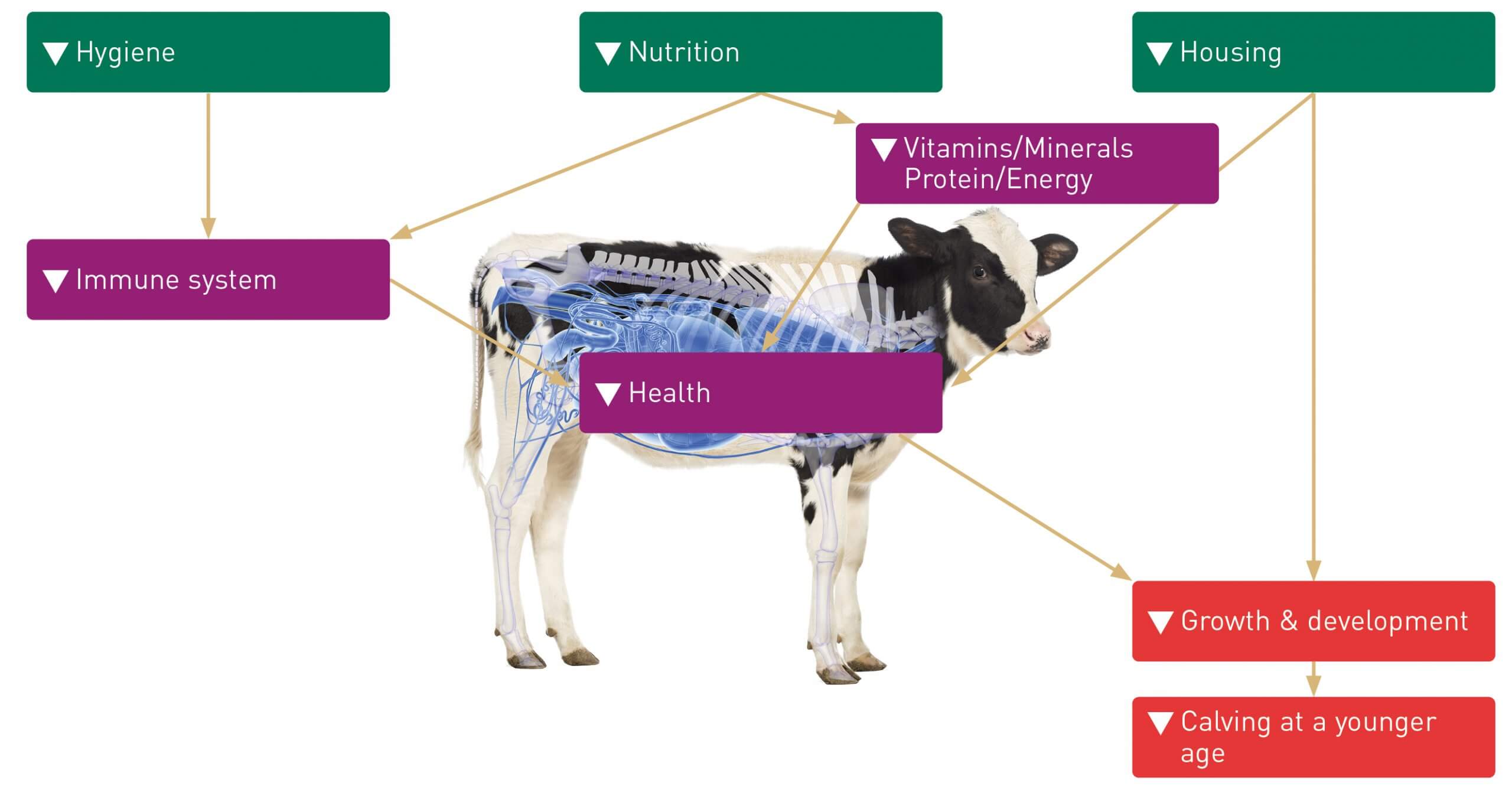Next day delivery
Order before 2:00PM
Free shipping
For orders above €100,-
Safe pay
By iDeal & Klarna
After the important period before weaning comes the period in which the calf is reared into a heifer. During this period, the heifer will be inseminated so it calves at an age of between 24 and 26 months and enters lactation. However, research suggests that a calving age of 23 months gives the highest lifetime production. The metabolic programming of calves (incl. using good feed) is the basis for achieving this.
So good feed, high growth and robust health are all necessary. The importance of this period is often underestimated, but because these animals are the dairy cows of the future, it requires greater attention. And the costs that are involved in rearing in this period are high, which also illustrates the importance of it to the dairy farmer. Indeed, studies show that rearing heifers represents around 20% of the total costs on a dairy farm. It is therefore the largest cost item – after dairy cattle feed – on the farm (Boulton et al. 2015).
An important factor in this period is good growth, which requires good feed. In addition to a good supply of energy and proteins, the proper provision of vitamins and minerals is also essential. But accommodation and hygiene (incl. claw health) must also be a key focus in this period.

The above image shows the effects on a calf where hygiene, nutrition and housing are “not optimal”.
▲ = increase/positive effect | ▼ = decrease/negative effect

The above image shows the effects on a calf where hygiene, nutrition and housing are ” optimal”.
▲ = increase/positive effect | ▼ = decrease/negative effect